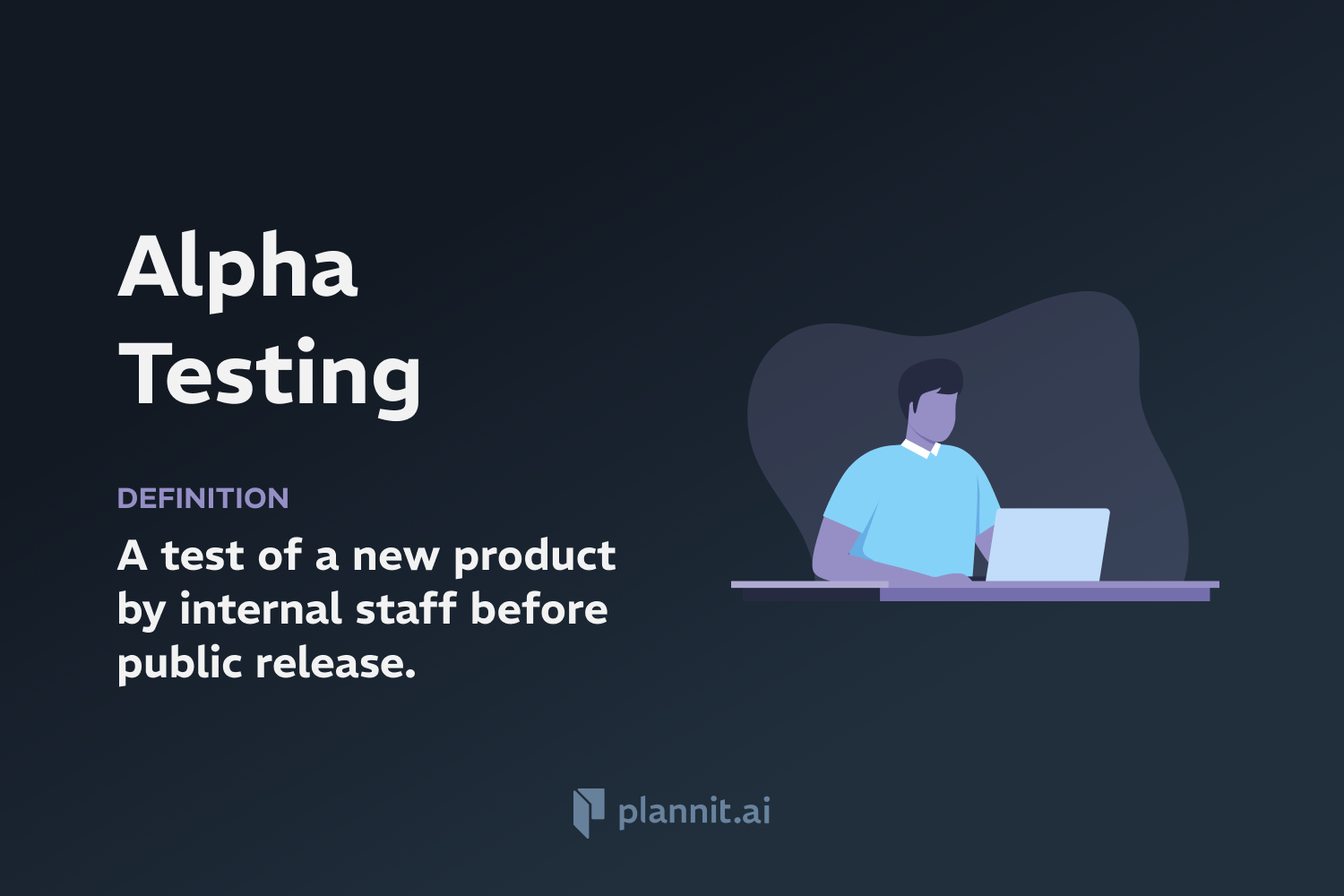Need Help With Your Business Plan?
Answer tailored questions and get a detailed business plan in minutes.
Alpha Testing: Definition & In-Depth Explanation

Alpha testing is a type of software testing performed primarily by developers in the initial software development phase. It is conducted in a lab environment and is one of the first forms of testing executed on a new product or a major software update. The objective is to identify bugs before releasing the software to external testers or the public.
Purpose:
The primary purpose of alpha testing is to catch flaws and errors ("bugs") in software that were not detected during earlier development stages. This type of testing aims to ensure the functionality, usability, and overall stability of the software before it advances to further testing stages, such as beta testing. It is a critical step in quality assurance and helps improve the reliability of the software.
Example:
In a typical alpha testing scenario, a company developing a new project management tool will first let the internal development team use the software in a controlled setting. The developers will perform tasks that simulate real-life operations to check for software crashes, missing functionalities, or any unexpected behavior of the application.
Related Terms:
Beta Testing: A testing phase where the software is exposed to actual users under real-world conditions outside the organization to further identify bugs, gather user feedback, and prepare for the commercial launch.
Software Development Life Cycle (SDLC): The process used by the software industry to design, develop, and test high-quality software.
Debugging: The process of finding and resolving defects or problems within a software that prevent correct operation.
Usability Testing: Testing to evaluate a product or service by testing it with representative users.
FAQs:
What distinguishes alpha testing from beta testing?
Alpha testing is typically conducted by internal staff, especially developers, within the development environment to catch bugs early. Beta testing involves real users in a real environment and focuses more on gathering user feedback on the product’s functionality and features.
How long does alpha testing usually last?
The duration of alpha testing can vary depending on the complexity of the software and the number of issues found. It generally lasts until the product reaches a relatively stable state with most major issues resolved.
Is alpha testing sufficient for software release?
No, alpha testing is just one phase of a comprehensive testing process. It needs to be followed by beta testing and other forms of testing to ensure the software is robust, user-friendly, and free from critical bugs.
Who performs alpha testing?
Alpha testing is usually performed by the developers who built the software, although sometimes a specialized internal testing team may be involved as well.
Can alpha testing be automated?
Some aspects of alpha testing, such as unit testing and integration testing, can be automated. However, manual testing is also crucial to identify usability and interface issues.
Get funding with a business plan that will impress investors.
Starting a New Business?



